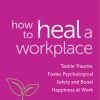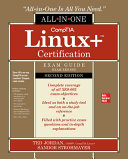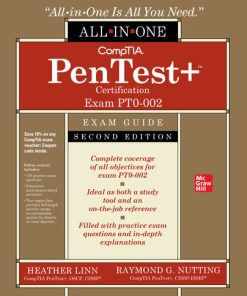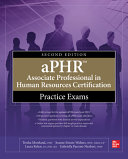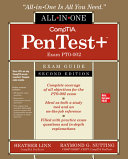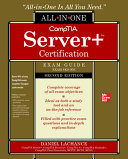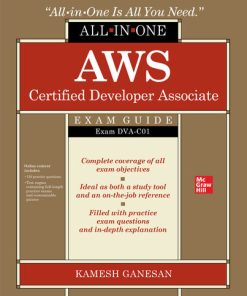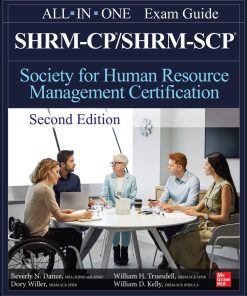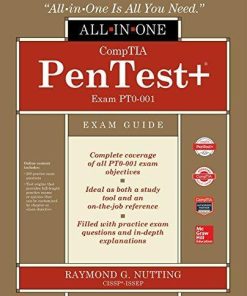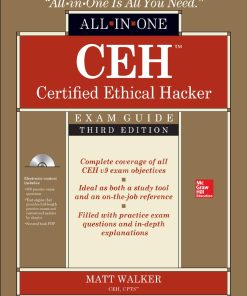(EBOOK PDF) aPHR Associate Professional in Human Resources Certification All in One Exam Guide 2nd Edition by Christina Nishiyama, Dory Willer, William Truesdell, William Kelly 9781264286263 1264286260 full chapters
$50.00 Original price was: $50.00.$25.00Current price is: $25.00.
aPHR Associate Professional in Human Resources Certification All in One Exam Guide 2nd Edition by Christina Nishiyama, Dory Willer, William Truesdell, William Kelly – Ebook PDF Instant Download/Delivery: 9781264286263, 1264286260
Full download aPHR Associate Professional in Human Resources Certification All in One Exam Guide 2nd Edition after payment
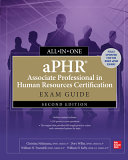
Product details:
• ISBN 10:1264286260
• ISBN 13:9781264286263
• Author:Christina Nishiyama, Dory Willer, William Truesdell, William Kelly
aPHR Associate Professional in Human Resources Certification All-in-One Exam Guide, Second Edition
This highly effective self-study system offers complete coverage of every subject on the aPHR® exam Take the Human Resources Certification Institute’s 2022 aPHR exam with complete confidence using this integrated study guide. Written by a team of HR experts, aPHR Associate Professional in Human Resources Certification All-in-One Exam Guide, Second Edition features information about the aPHR exam, HR certifications in general, and important U.S. laws and regulations. You’ll find learning objectives at the beginning of each chapter, exam tips, accurate practice questions, and in-depth explanations. Beyond fully preparing you for the challenging exam, the guide also serves as a valuable on-the-job reference. Covers all exam topics, including: U.S. laws and regulations Talent acquisition Learning and development Compensation and benefits Employee relations Compliance and risk management Early HR career–level tasks Online content includes: 250 practice exam questions Test engine that provides full-length practice exams and customized quizzes by topic
aPHR Associate Professional in Human Resources Certification All in One Exam Guide 2nd Table of contents:
Part I The Human Resource Profession
Chapter 1 Human Resource Certification
Professional Certifications
HR Certification Organizations
The HR Certification Institute (HRCI)
The Society for Human Resource Management (SHRM)
The International Public Management Association for Human Resources (IPMA-HR)
Benefits of Certification
The aPHR Exam
The Significance of the HR Body of Knowledge
The Test Development Process
The Exam Experience
The aPHR Registration Process
Preparing for the Exam
Exam Readiness
Chapter Review
Endnotes
Chapter 2 U.S. Laws and Regulations
When You Have ONE or More Employees
The Clayton Act (1914)
The Consumer Credit Protection Act (1968)
The Copeland “Anti-Kickback” Act (1934)
The Copyright Act (1976)
The Davis-Bacon Act (1931), as Amended in 2002
The Dodd-Frank Wall Street Reform and Consumer Protection Act (2010)
The Economic Growth and Tax Relief Reconciliation Act (EGTRRA) (2001)
The Electronic Communications Privacy Act (ECPA) (1986)
The Employee Polygraph Protection Act (1988)
The Employee Retirement Income Security Act (ERISA) (1974)
The Equal Pay Act (an Amendment to the FLSA) (1963)
The FAA Modernization and Reform Act (2012)
The Fair and Accurate Credit Transactions Act (FACT) (2003)
The Fair Credit Reporting Act (FCRA) (1970), as Amended in 2011
The Fair Labor Standards Act (FLSA) (1938)
The Foreign Corrupt Practices Act (FCPA) (1977)
The Health Information Technology for Economic and Clinical Health (HITECH) Act (2009)
The Health Insurance Portability and Accountability Act (HIPAA) (1996)
The Immigration and Nationality Act (INA) (1952)
The Immigration Reform and Control Act (IRCA) (1986)
The IRS Intermediate Sanctions (2002)
The Labor-Management Relations Act (LMRA; Taft-Hartley Act) (1947)
The Labor-Management Reporting and Disclosure Act (Landrum-Griffin Act) (1959)
The Mine Safety and Health Act (1977)
The National Industrial Recovery Act (1933)
The National Labor Relations Act (NLRA; Wagner Act) (1935)
The Needlestick Safety and Prevention Act (2000)
The Norris-LaGuardia Act (NLRA) (1932)
The Occupational Safety and Health Act (OSHA) (1970)
The Omnibus Budget Reconciliation Act (OBRA) (1993)
The Pension Protection Act (PPA) (2006)
The Personal Responsibility and Work Opportunity Reconciliation Act (1996)
The Portal-to-Portal Act (1947)
The Railway Labor Act (1926)
The Rehabilitation Act (1973)
The Retirement Equity Act (REA) (1984)
The Revenue Act (1978)
The Sarbanes-Oxley Act (SOX) (2002)
The Securities and Exchange Act (1934)
The Service Contract Act (1965)
The Sherman Anti-Trust Act (1890)
The Small Business Job Protection Act (1996)
The Social Security Act (1935)
The Tax Reform Act (1986)
The Taxpayer Relief Act (1997)
The Trademark Act (1946)
The Unemployment Compensation Amendments (UCA) (1992)
The Uniformed Services Employment and Reemployment Rights Act (USERRA) (1994)
The Vietnam Era Veterans Readjustment Assistance Act (1974), as Amended by the Jobs for Veterans Act (2002)
The Wagner-Peyser Act (1933), as Amended by the Workforce Innovation and Opportunity Act (2014)
The Walsh-Healey Act (Public Contracts Act) (1936)
The Work Opportunity Tax Credit (WOTC) (1996)
Whistleblowing
For FIFTEEN or More Employees
The Americans with Disabilities Act (ADA) (1990), as Amended by the Americans with Disabilities Act Amendments Act (ADAAA) (2008)
The Civil Rights Act (Title VII) (1964)
The Civil Rights Act (1991)
The Drug-Free Workplace Act (1988)
The Equal Employment Opportunity Act (EEOA) (1972)
The Genetic Information Nondiscrimination Act (GINA) (2008)
Guidelines on Discrimination Because of Sex (1980)
The Lilly Ledbetter Fair Pay Act (2009)
The Pregnancy Discrimination Act (1978)
The Uniform Guidelines on Employee Selection Procedures (1978)
For TWENTY or More Employees
The Age Discrimination in Employment Act (ADEA) (1967), as Amended
The American Recovery and Reinvestment Act (ARRA) (2009)
The Consolidated Omnibus Budget Reconciliation Act (COBRA) (1986)
The Older Workers Benefit Protection Act (OWBPA) (1990)
For FIFTY or More Employees
Executive Order 11246: Affirmative Action (1965)
The Family and Medical Leave Act (FMLA) (1993), Expanded 2008, 2010
The Mental Health Parity Act (MHPA) (1996)
The Mental Health Parity and Addiction Equity Act (MHPAEA) (2008)
The National Defense Authorization Act (2008), Expanded in 2010
The Patient Protection and Affordable Care Act (PPACA) (2010)
Executive Order 13706: Paid Sick Leave for Federal Contractors (2015)
For ONE HUNDRED or More Employees
The Worker Adjustment and Retraining Notification (WARN) Act (1988)
For Federal Government Employees
The Civil Service Reform Act (1978)
The Congressional Accountability Act (1995)
The False Claims Act (1863)
The Homeland Security Act (2002)
The Privacy Act (1974)
The USA PATRIOT Act (2001)
Employment Visas for Foreign Nationals
E Nonimmigrant Visas
H Visas
L-1 Intracompany Transferee
O-1 Alien of Extraordinary Ability in Arts, Science, Education, Business, Athletics
P Visa Categories
EB Employment-Based Visas
Chapter Review
Questions
Answers
Endnotes
Part II aPHR Body of Knowledge Functional Areas
Chapter 3 Talent Acquisition
Knowledge of
Laws and Regulations
Federal Laws
Workforce Planning
Forecasting Staffing Needs
Job Analysis
Job Descriptions and Job Specifications
Alternative Staffing Practices
Phased Retirement
Contractor Payrolling
Employee Leasing and Professional Employer Organizations (PEOs)
Outsourcing and Managed Service Providers (MSPs)
Temp-to-Lease Programs
Rehires and Transfers
Talent Sourcing
Internal Recruitment
External Recruitment
Applicant Databases
Records Retention
Résumés vs. Job Applications
Self-Identification
Pre-employment Skill Testing
Interviewing Techniques
Types of Interviews
Interviewing Skills and Techniques
Interviewing Bias
After the Interview
Job Offers
Background Checks
Medical Examinations
Onboarding
Administrative Paperwork
Onboarding for Retention
Return on Investment
Some Ways to Measure Hiring
Chapter Review
Questions
Answers
Endnotes
Chapter 4 Learning and Development
Knowledge of
Laws and Regulations
HR’s Role in Training and Development
Organizational Values
Setting Expectations in Orientation
Instructional Design
Learning Objectives
ADDIE Model
Teacher-Centered Approaches
Learner-Centered Approaches
Chunking
Learning Curves
Training Delivery Format
Classroom
E-Learning
On-the-Job Training (OJT)
Techniques to Evaluate Training Programs
Participant Surveys and Questionnaires
Pre- and Post-Testing
Measuring Behavior: After-Action Review
Return on Investment
Tracking and Reporting
Career Development Practices
Succession Planning
Career Pathing
Dual-Ladder Careers
Career Counseling
Change Management
Popular Theories
Chapter Review
Questions
Answers
Endnotes
Chapter 5 Compensation and Benefits
Knowledge of
Laws and Regulations
The Employee Retirement Income Security Act (ERISA)
Fair Labor Standards Act (FLSA) (1938), as Amended
Health Insurance Portability and Accountability Act (HIPAA)
Social Security Act
The Uniformed Services Employment and Reemployment Rights Act (USERRA)
Consolidated Omnibus Budget Reconciliation Act (COBRA)
Family and Medical Leave Act (FMLA)
Patient Protection and Affordable Care Act (PPACA)
Total Rewards
Secrecy or Transparency?
Job Evaluation
Job Evaluation Methods
Pricing and Pay Rates
Pay Grades and Ranges
Variations in Pay: Red and Green Circle Rates
Base Pay Systems
Single or Flat-Rate System
Time-Based Step Rate Systems
Performance-Based Merit Pay System
Productivity-Based Systems
Straight Piece-Rate System
Differential Piece-Rate System
Person-Based Systems
Knowledge-Based System
Skill-Based System
Competency-Based System
Financial Incentives
Differential Pay
Overtime Pay
Hazard Pay
Shift Pay
Reporting Time Pay
On-Call Pay
Callback Pay
Geographic Differentials
Weekend and Holiday Pay
Team and Group Incentives
Organization-Based Pay
Profit Sharing
Gainsharing
Payroll
Payroll Administration
Payroll Systems
Wage Statements
Employee Benefits
Government-Mandated Benefits
Healthcare Benefits
Health Benefits Eligibility
Health Benefits Enrollment
Healthcare Plan Designs
Prescription Drug Plans
Dental Plans
Vision Care Plans
Healthcare Costs
Common Benefits Provided to Employees
Disability Benefits
Life Insurance
Long-Term Care (LTC) Insurance
Employee Assistance Programs (EAPs)
Retirement Plans
Supplemental Unemployment Benefits (SUBs)
Paid Leaves
Supplemental Benefits
Tuition Reimbursement
Paid Volunteer Time
Workplace Amenities
Employee Recognition Programs
Childcare Services
Elder Care
Commuter Assistance
Prepaid Legal Insurance
Gym Membership
Housing or Relocation Assistance
Travel Stipends
Legal Compliance
Taxable and Nontaxable Benefits
Communication Required by Law
Benefits Communication
Total Rewards Statements
Communicating Through Employee Self-Service (ESS) Technologies
Chapter Review
Questions
Answers
Endnotes
Chapter 6 Employee Relations
Knowledge of
Laws and Regulations
State Laws
Federal Regulations
Rights and Responsibilities
Employer
Employee
Organizational Strategy
Mission
Vision
Values
Goals and Objectives
Strategic Planning
Organizational Structure
Organizational Communication
Human Resource Information Systems (HRISs)
Human Resource Policies
Employee Handbook
Employee Engagement Programs
Recognition
Work/Life Balance
Alternative Work Arrangements
Special Events
Employee Feedback
Employee Surveys
Processes for Obtaining Feedback
Diversity and Inclusion Programs
Cultural Sensitivity and Acceptance
Social Responsibility
Measuring Diversity
Performance Management
Performance Standards
Performance Appraisal Methods
Shortcomings of Performance Appraisals
Performance Improvement Plan (PIP)
Workplace Behavior
Attendance and Absenteeism
Violation of Code of Conduct
Employee Conflicts
Workplace Harassment
Complaints and Grievances
Methods of Investigation
Progressive Discipline
Identifying Steps of Discipline
Documenting Progressive Discipline
When to Escalate Corrective Action
Termination
Off-Boarding
Payroll Processing: Final Paycheck
Benefit Processing
Documenting Reason for Separation
Chapter Review
Questions
Answers
Endnotes
Chapter 7 Compliance and Risk Management
Knowledge of
Laws and Regulations
Employment-at-Will
Equal Employment Opportunity Commission (EEOC)
Department of Labor (DOL)
Labor Unions
NLRB Procedures for Recognizing a Union
Collective Bargaining
Contract Negotiation
Establishing Contract Costs
Administering Union Contracts (MoU or CBA)
Unfair Labor Practices
Complaint/Grievance Handling
Mediation and Arbitration (Alternative Dispute Resolution, or ADR)
Risk Mitigation
Injury and Illness Prevention Plan (IIPP)
Health and Safety Monitoring
Handling Workplace Violence
Handling Emergencies
Business Continuity
Workforce Restructuring
Security Risks
Data Security/Cyber-Crimes
Inventory and Supply Security
Equipment Security
Theft Prevention/Loss Prevention
Preventing Equipment Damage
Securing Passwords
Terrorism
Workers’ Compensation Compliance
Reporting Requirements
Return-to-Work Policies
OSHA Compliance
Workplace Safety Inspections
Accident Reporting
Chapter Review
Questions
Answers
Endnotes
Chapter 8 Early HR Career–Level Tasks
Task #1: Access, Collect, and Provide Information and Data to Support HR-Related Decisions
Task #2: Comply with All Applicable Laws and Regulations
Task #3: Coordinate and Communicate with External Providers of HR Services
Task #4: Maintain Employee Data in HRIS or System of Record
Task #5: Maintain, File, and Process HR Forms
Task #6: Prepare HR-Related Documents
Task #7: Provide Internal Customer Service by Answering or Referring HR-Related Questions from Employees as the First Level of Support
Task #8: Communicate Information about HR Policies and Procedures
Task #9: Communicate the Organization’s Core Values, Vision, Mission, Culture, and Ethical Behaviors
Task #10: Identify Risk in the Workplace
Task #11: Minimize Risk by Conducting Audits
Task #12: Document and Update Essential Job Functions with Support of Managers
Task #13: Post Job Listings
Task #14: Manage Applicant Databases
Task #15: Screen Applicants for Managers to Interview
Task #16: Answer Questions from Job Applicants
Task #17: Coordinate Interview Logistics
Task #18: Interview Job Candidates
Task #19: Arrange for Tests and Assessments of Applicants
Task #20: Coordinate the Employment Offer
Task #21: Administer Post-Offer Employment Activities
Task #22: Communicate Compensation and Benefits Programs and Systems
Task #23: Coordinate Activities to Support Employee Benefits Programs
Task #24: Coordinate Payroll-Related Information
Task #25: Process Claims from Employees
Task #26: Resolve Routine Employee Compensation and Benefits Issues
Task #27: Conduct Orientation and Onboarding for New Hires, Rehires, and Transfers
Task #28: Coordinate Training Sessions
Task #29: Conduct Employee Training Programs
Task #30: Coordinate the Logistics for Employee Relations Programs
Task #31: Monitor Completion of Performance Reviews and Development Plans
Chapter Review
Endnote
Part III Appendixes and Glossary
Appendix A List of Common HR Acronyms
Appendix B Case Laws by Chapter
Chapter 3: Talent Acquisition
Chapter 4: Learning and Development
Chapter 5: Compensation and Benefits
Chapter 6: Employee Relations
Chapter 7: Compliance and Risk Management
Chapter 8: Early HR Career–Level Tasks
Appendix C For Additional Study
Appendix D About the Online Content
System Requirements
Your Total Seminars Training Hub Account
Privacy Notice
Single User License Terms and Conditions
TotalTester Online
Technical Support
Glossary
Index
People also search for aPHR Associate Professional in Human Resources Certification All in One Exam Guide 2nd:
aphr associate professional in human resources
aphr associate professional in human resources certification practice exams
associate professional in human resources aphr certification prep
associate professional in human resources aphr cost
associate professional in human resources aphr salary
Tags:
aPHR Associate,Professional in Human,Human Resources,Christina Nishiyama, Dory Willer, William Truesdell, William Kelly
You may also like…
Computers - Computer Certification & Training
CompTIA Linux+ Certification All-in-One Exam Guide (Exam XK0-005) 2nd Edition
Computers - Computer Certification & Training
CompTIA PenTest+ Certification All-in-One Exam Guide (Exam PT0-002) 2nd Edition
Computers - Security
Computers - Networking
AWS Certified Developer Associate All-in-One Exam Guide (Exam DVA-C01) 1st Edition
Computers & Technology
CompTIA PenTest+ Certification All-in-One Exam Guide (Exam PT0-001) 1st Edition
Computers - Computer Certification & Training
CEH All-in-One Exam Guide 3rd Edition Professional Matt Walker


